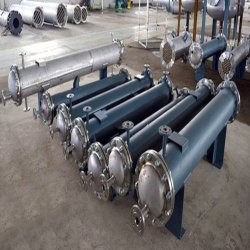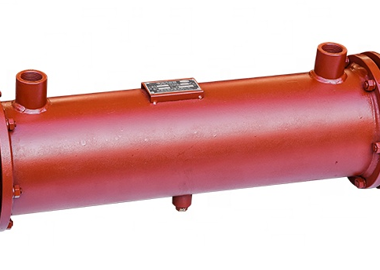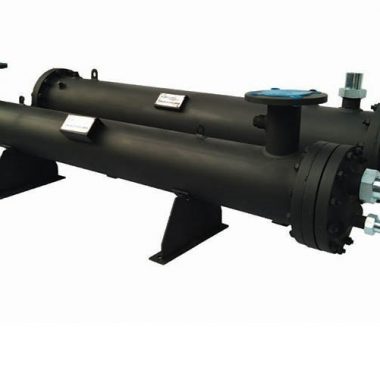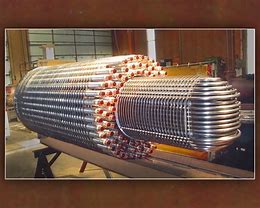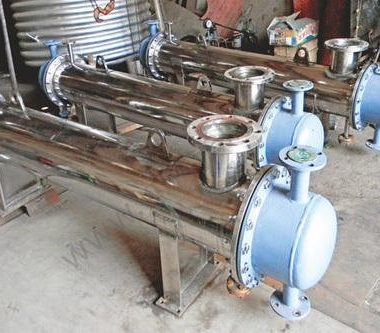Shell and Tube Condensers
Shell and Tube Condensers
Shell and tube condensers are a sort of heat exchanger broadly utilized in industrial applications for condensing vapors into liquids. They are known for their robust design, tall effectiveness, and flexibility. Here’s a detailed see at shell and tube condensers:
Components of Shell and Tube Condensers
Shell:
- The external cylindrical vessel that houses the tube bundle.
- It serves as the enclosure where the vapor to be condensed streams.
Tube Bundle:
- Comprises of various tubes through which the cooling fluid circulates.
- Can be straight or U-shaped, depending on the plan.
Tube Sheets:
- Plates at each end of the tube bundle where the tubes are fixed and fixed.
- They guarantee the division of the shell-side and tube-side fluids.
Confuses:
- Inner components that coordinate the flow of vapor inside the shell.
- Offer assistance increment heat transfer productivity by making turbulence.
Nozzles:
- Inlet and outlet ports for the vapor and cooling fluid.
- Permit for the association of the condenser to the rest of the system.
Working Principle
Vapor Entry:
- The vapor to be condensed enters the shell through the vapor inlet nozzle.
- It streams over the tube bundle, where it comes into contact with the cooler tube surfaces.
Cooling Fluid Circulation:
- The cooling fluid, such as water or a refrigerant, enters the tubes through the tube-side inlet nozzle.
- It streams through the tubes, retaining heat from the vapor outside the tubes.
Heat Transfer:
- Heat is exchanged from the vapor to the cooling fluid through the tube dividers.
- The cooling liquid heats up, whereas the vapor loses its heat and condenses into a liquid.
Condensed Liquid Collection:
- The condensed liquid collects at the foot of the shell.
- It exits the condenser through the liquid outlet nozzle.
Cooled Fluid Exit:
- The warmed cooling fluid exits the tube bundle through the tube-side outlet spout.
- It can be recirculated, cooled once more, or arranged of, depending on the system plan.
Applications of Shell and Tube Condensers
Power Plants:
- Utilized in steam power plants to condense exhaust steam from turbines.
- Essential for changing over steam back to water for reuse within the boiler.
Refrigeration and Air Conditioning:
- Utilized to condense refrigerant vapors in HVAC systems.
- Basic for the effective operation of cooling cycles.
Petrochemical Industry:
- Utilized in processes where hydrocarbon vapors need to be condensed.
- Indispensably to refining, extraction, and chemical response forms.
Pharmaceutical Industry:
- Utilized in the generation of pharmaceuticals to condense solvents and dynamic ingredients.
- Guarantees purity and proficiency in manufacturing forms.
Marine Applications:
- Utilized on ships to condense steam from engines and turbines.
- Makes a difference manage the heat adjust and proficiency of marine propulsion systems.
Advantages of Shell and Tube Condensers
High Efficiency:
- Compelling heat transfer due to the expansive surface area of the tubes.
- Improved by the use of baffles to make turbulence.
Versatility:
- Can handle a wide run of pressures and temperatures.
- Appropriate for different industrial applications.
Durability:
- Robust development that can withstand harsh working conditions.
- Long benefit life with appropriate maintenance.
Ease of Maintenance:
- Tubes can be cleaned and supplanted without destroying the entire unit.
- Allows for helpful support and repairs.
Disadvantages of Shell and Tube Condensers
Size and Weight:
- Can be huge and heavy, requiring considerable space and back structures.
- May not be appropriate for applications with space constraints.
Complexity:
- Plan and creation can be complex, leading to higher beginning costs.
- Requires skilled faculty for establishment and maintenance.
Conclusion
Shell and tube condensers are a basic component in numerous industrial forms, offering high effectiveness, durability, and versatility. Their capacity to handle different pressures and temperatures makes them reasonable for control plants, refrigeration systems, petrochemical businesses, and more. Despite their estimate and complexity, the benefits they give in terms of proficient heat transfer and ease of maintenance make them a preferred choice for many applications.
